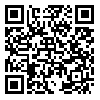BibTeX | RIS | EndNote | Medlars | ProCite | Reference Manager | RefWorks
Send citation to:
URL: http://rehabilitationj.uswr.ac.ir/article-1-419-en.html
Objective: The aim of this research was to compare the body image between disabled athletes with disabled and non-disabled non- athletes.
Materials & Methods: In this cross sectional and comparative study, fifty disabled athletes from the handicapped sports club, fifty disabled non athletes from Kahrizak disabled rest house and fifty non athlete healthy persons from governmental administrations were selected randomly by classified clustered method and their body image were compared. Data collection tools included a personal information questionnaire and a physical self description questionnaire (PSDQ) which included 11 sub-scales such as power, endurance, coordination, general health, flexibility, self-esteem, athletic competence, fat, body appearance, body activity and the global physical. The statistical procedures used in this study comprised one way ANOVA and the Newman-keuls test.
Results: Body image of disabled athletes in the sub-scales of power, endurance, coordination, flexibility, self-esteem, athletic competence, body activity were higher than disabled and non-disabled individuals who were not athletes (P&le0.001). In addition the sub-scales of the body fat (P=0.012), body appearance (P=0.002) and general health (P=0.001), the results showed that a higher significance for the disabled athletes, however, there wasn’t significant difference for the non-disabled athletes.
Conclusion: Thus the result showed that the attitude of the disabled and non-disabled individual in due to their continuous physical activity in that the disabled athletes have got better body images as compared to the disabled and non-disabled individual who have not physical activity.
Received: 27/02/2010 | Accepted: 13/10/2015 | Published: 13/10/2015
| Rights and permissions | |
 |
This work is licensed under a Creative Commons Attribution-NonCommercial 4.0 International License. |





